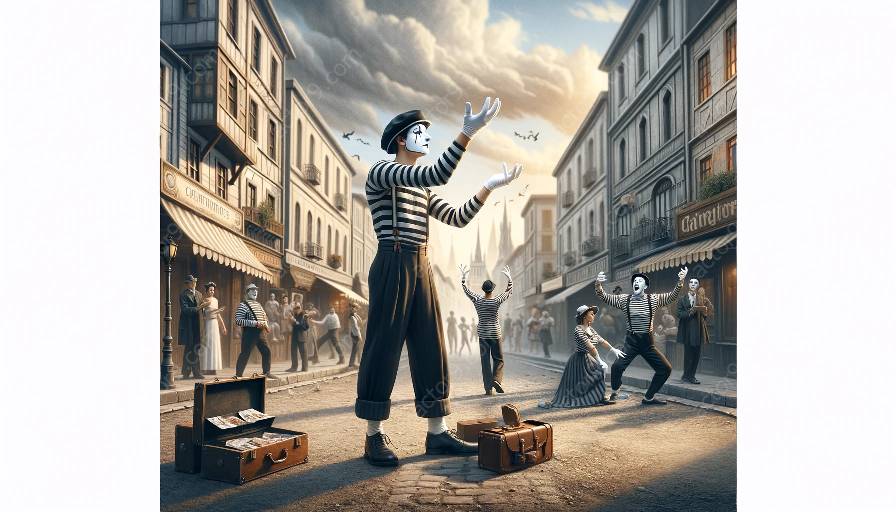Mastering the art of body language in the context of mime and comedy is a complex and intricate process that requires a deep understanding of non-verbal communication and its role in conveying emotions and messages to the audience. In this topic cluster, we will explore the unique challenges individuals face when delving into the world of mime and comedy, considering the compatibility of body language and expression in mime and the nuances of physical comedy.
Understanding Body Language in Mime
Body language in mime is a fundamental tool for expressing emotions, actions, and narrative in a wordless form. Mimics rely on a range of subtle and exaggerated gestures, facial expressions, and movements to communicate with their audience. The challenge lies in mastering the art of translating these non-verbal cues into powerful communication that resonates with the audience.
Challenges of Expressing Emotions Non-Verbally
One of the primary challenges in mastering body language in mime and comedy is the accurate portrayal of emotions without the use of words. Mime artists must utilize their entire body, from facial expressions to posture and movement, to effectively convey nuanced emotions such as joy, sadness, fear, and surprise.
Furthermore, incorporating humor into these non-verbal expressions adds another layer of complexity. Comedic timing, exaggerated movements, and over-the-top gestures are essential elements in physical comedy, requiring careful mastery to elicit laughter and engagement from the audience.
Adapting to Diverse Cultural Contexts
Another challenge faced by performers mastering body language in mime and comedy is adapting their non-verbal communication to diverse cultural contexts. Different gestures and expressions hold varying meanings across cultures, and mime artists must navigate these differences to ensure their performances are universally understandable and appreciated.
Integration of Verbal and Non-Verbal Elements in Comedy
When it comes to physical comedy, the seamless integration of verbal and non-verbal elements presents a significant challenge. Performers must strike a delicate balance, using body language to enhance the comedic narrative while also relying on verbal cues where necessary. This intricate interplay demands meticulous choreography and an acute understanding of comedic timing.
Role of Improvisation and Spontaneity
Mime and physical comedy often require improvisation and spontaneity, adding an extra layer of challenge to mastering body language in these art forms. Performers must be adept at swiftly adapting their body language and expressions to unexpected situations, all while maintaining coherence in their narrative and engaging the audience.
Conclusion
The challenges of mastering body language in mime and comedy are multifaceted, encompassing the nuanced expression of emotions, cultural adaptability, integration of verbal and non-verbal elements, and the demand for improvisation. Despite these challenges, the art of mime and physical comedy offers a unique and rewarding opportunity for performers to explore the depths of non-verbal communication and entertain audiences through the power of expressive body language.


























